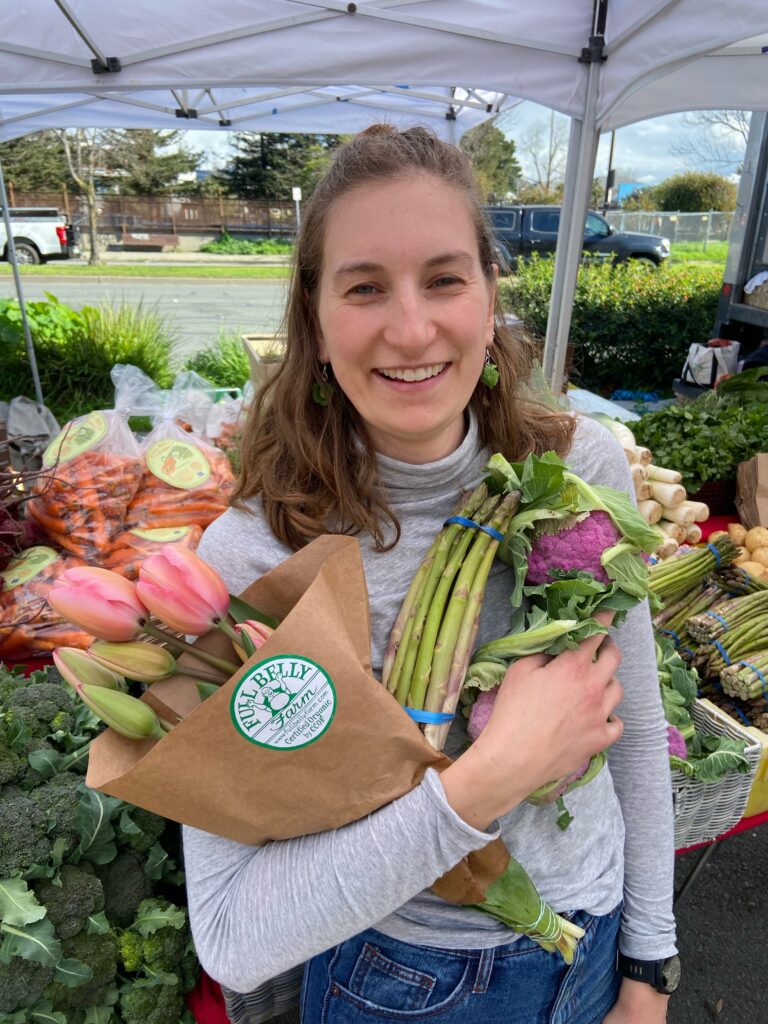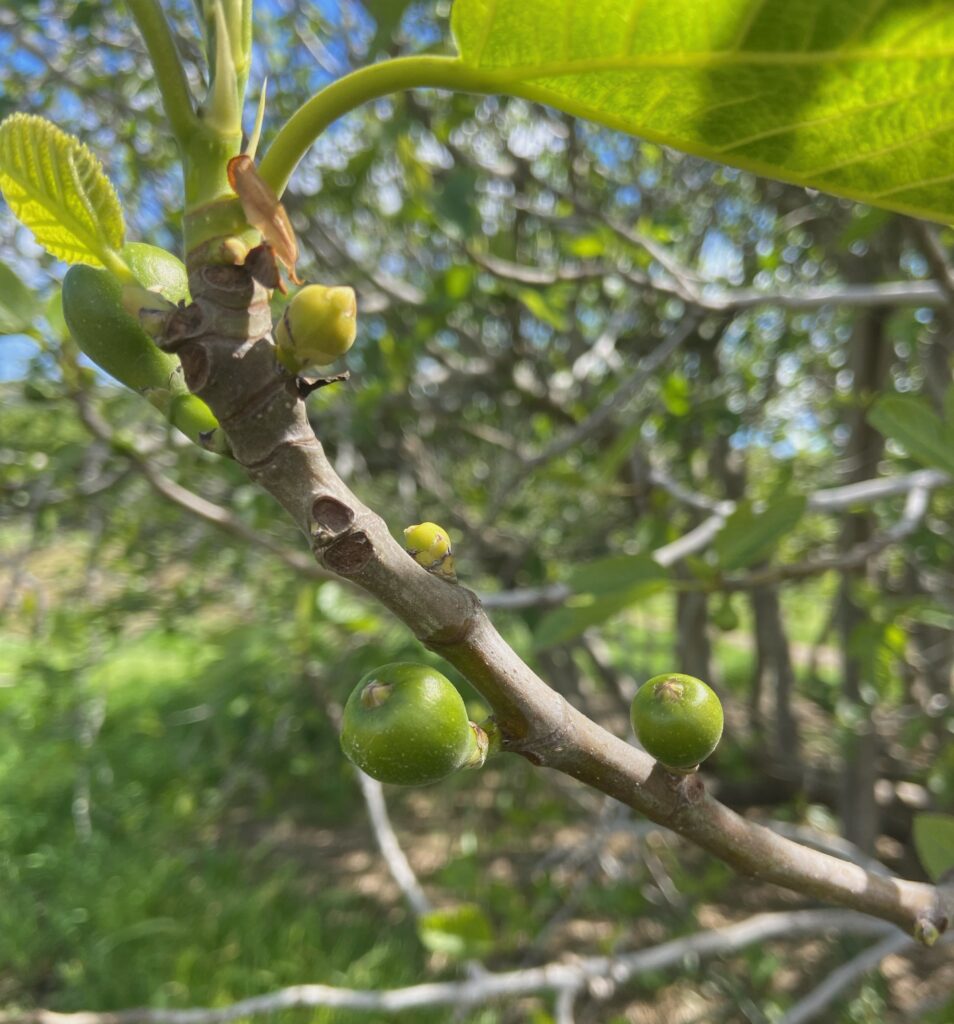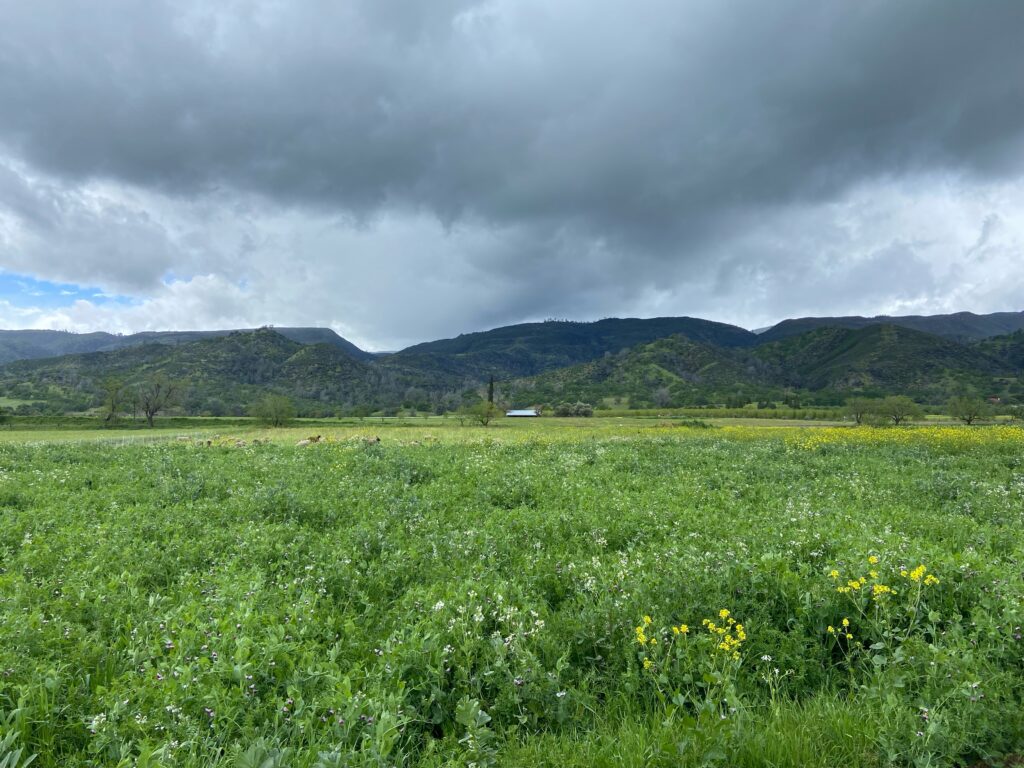
Every week while managing our South Berkeley farmers market stand, I get asked over and over again “So, what’s new at the farm?”
I love this question because it is completely open-ended and forces me to synthesize all the moving parts that make up Full Belly Farm for someone who cares about us. In some ways, it’s my own short version of this weekly newsletter.
During a recent answer to that humble question, I found myself talking about the unique quirks of early spring- baby fruit forming on the trees that hopefully don’t get knocked out by a late frost, and the sight of early sunflowers popping up amidst a bout of hail. One of the things I love about living and working on a farm is how in tune we are with the season. The seasons dictate the work we do, what is harvested, and what we eat. But the seasons are much more nuanced than spring, summer, fall, and winter. Each month, even each week, is different and unique. This particular period is full of anticipation for the impending frantic pace of late spring and summer, with the weather switching between warm and cold, dry and wet. Back at the market, I explained how once we get more consistent warm and dry days, life at the farm is like a rollercoaster; once you get on, you can’t really get off.

If you shop at our farmers markets, you may notice much less variety now than other times of the year. As opposed to summer or fall when I stress about how to fit everything on our tables, I find myself with empty space. I field questions about how long asparagus will be around for, when the strawberries will return and I break hearts when I explain we are done with navel oranges for the year. During this time, every item that leaves or is added to the table feels monumental. As opposed to summer when everything feels abundant (too many things to eat!) the relative scarcity of early spring forces us to cling to what we do have, and our customers- experienced in the nuances of Full Belly Farm- never seem to mind. From behind the table, I hear them singing the virtues of sweet broccoli stalks, gasping at the sight of the elusive bunched spinach, and trading opinions on whether thick or skinny asparagus tastes better (the answer: It’s personal!)
The scarce farmers market table is in stark contrast to the flurry of activity on the farm these days. As has been explained many times here, a wet winter is good but also tricky. Because of the constant rain, it can be very difficult to find a window to plant late spring and early summer crops. Most of the planting happens in a rush on one or two days when the ground is finally dry enough. You know there’s going to be a lot of planting coming up because the mechanic shop is surrounded by a range of tractors. In the maze of metal, wheels, and discs, you can see farmers and crew members covered in grease, welding masks on, tool in hand and tinkering away. Then a rainy and cold period will hit, and everyone is checking their “winter projects list” once again.
With warmer weather and continued rain, the farm is a lush green jungle. Weed whackers are always a coveted item on the farm, but during this critical period it can be a quest to find one that is in working order and not already in use. Last week, needing to clean up for our spring events, I found myself driving around the farm to search the backs of trucks and asking crew members if they had seen one. After enough scouting I finally received a tip on a secret stash of weed whackers in a tucked away barn.
As I cut back winter’s weeds, I recalled all the events and people that had been in that space the previous year. The people who had celebrated marriages, danced with old friends, and dined under the shade of the trees. I recalled those long hot days and warm nights filled with the satisfaction of sharing the farm with folks eager to experience its glory. Once the weed whacker was turned off, I watched the gray clouds roll over the hills, snacked on a mandarin, and was reminded to enjoy the calm before the storm.
Alexa McCarthy

